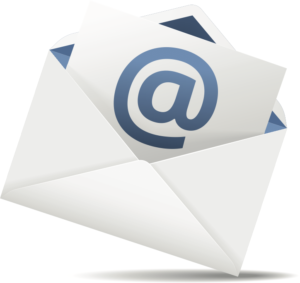4 Email Templates to Keep in Touch
Matthew Bellows
Some time ago I wrote about Four Winning Approaches to Writing a Cold Email. Hopefully, that article helped you break through the hundreds of emails your prospect gets every day. But now, you’ve got to keep in touch and build trust with this person.
Here are three examples of “Keeping in Touch” emails, plus a “Getting Back in Touch” template. As a reminder, the four approaches are:
- Congratulations
- Praise
- Adding Value
- Off-Topic
In all cases, your email should be: specific | detailed | genuine.
“Specific” means you could get through the prospect’s personal spam filter.
“Detailed” means that you are actually providing something useful – you’ve spent the time to think about the prospect’s situation and can propose actionable solutions.
And “Genuine” means—well, just that. No bullshit. Don’t try to be anyone’s best buddy. Just be yourself, be honest, and be clear.
The basic approach with these Keeping in Touch emails is to switch tactics. If you were Congratulating a prospect, switch to Adding Value or Off-Topic. If you started with Off-Topic, go to Adding Value. Mix up your approach to demonstrate your depth as a resource and a person.
Get 18 more free email templates here.
Some time ago I wrote about Four Winning Approaches to Writing a Cold Email. Hopefully, that article helped you break through the hundreds of emails your prospect gets every day. But now you’ve got to keep in touch and build trust with this person. Here are three examples of “Keeping in Touch” emails, plus a “Getting Back in Touch” template. As a reminder, the four approaches are:
- Congratulations
- Praise
- Adding Value
- Off-Topic
In all cases, your email should be: specific | detailed | genuine.
“Specific” means you could get through the prospect’s personal spam filter.
“Detailed” means that you are actually providing something useful – you’ve spent the time to think about the prospect’s situation and can propose actionable solutions.
And “Genuine” means—well, just that. No bullshit. Don’t try to be anyone’s best buddy. Just be yourself, be honest, and be clear.
The basic approach with these Keeping in Touch emails is to switch tactics. If you were Congratulating a prospect, switch to Adding Value or Off-Topic. If you started with Off-Topic, go to Adding Value. Mix up your approach to demonstrate your depth as a resource and a person.
Get 18 more free email templates here.
Here’s a Congratulations email template to follow an Adding Value opening:
Dear Ted,
Last week I sent you an article from The Economist on [changing industry dynamic] because it seemed to speak to your situation. This morning I find out your team has announced a whole new product line! Congratulations to you and your team on the launch. I know how hard it is to build something from scratch. In looking over the materials you posted, I had two questions:
1. [A genuine non-self-serving question about how it works]
2. [A question about how it could intersect with your company’s product]
The reason I’m asking is that my company makes [XXX] and [YYY]. I’m always trying to find new applications and to learn new approaches for our work here.
Interested to hear your thoughts,
Freddy
Three quick notes on this template:
- I always use “you” and “yours” when talking about the prospect’s company. Personal pronouns personalize the email. When talking about the other company employees, I _always_ say “your team” because a) they are all on the same team and b) from the reader’s point of view, it’s a bit flattering to hear that someone outside the company might think that these unrelated departments are all part of “my team.”
- This approach is easily adopted for press coverage, new customer announcements, new exec hires, etc. Keep the format, completely change the content in those situations.
- It might be tempting to end with “Let’s schedule a call to discuss” or somesuch. Don’t do it. Let the person get back to you via email if they want. If they do, you are building communication. If they don’t, there are more templates below or highlighted in the sidebar here.
Here’s an Adding Value template to follow a Congratulations opening:
Hi Sarah,
Your news last week made an impression on me – I’ve found myself thinking about your company a fair amount since then. Here’s a Business Week article that thoughtfully describes some of the same opportunities that your announcement addressed [link]. Am I reading this right? [Question about how the article impacts Sarah’s company]?
Hope you find it interesting!
Fred
Notes on this template:
- Yes! It’s short! Congratulations emails run the risk of fawning/ass-kissing. The goal here is to Add Value, ask a question in case the prospect wants to engage, and then get out of the way.
- Keep it relevant. The only way this approach will work is if you can connect the dots. If you are working too hard to cram the Congrats and the Value together – stop and find something else to say.
Here’s an Adding Value template to follow an Off-Topic opening:
Note: Remember that the Off-Topic approach is the riskiest one. It’s inspired by something timely and personal that the prospect puts out in a public forum. Now you have to pull back to prove your professional value while dispelling once and for all the fear that you are a stalker.
Hi William,
Hope those restaurant recommendations for Houston served you well. I’d love to hear if any of them worked out. I’ve been doing some thinking about your company, and I was wondering if you know [high-value contact of yours]. She’s the SVP at [potentially interesting customer/prospect for William]. I’d guess that with their [new office in China, interest in injection molding, etc.] and your accomplishments in the same, you guys might enjoy talking.
Want me to make an introduction?
Harry
Note: Salespeople don’t do enough trading of introductions. It’s an incredibly effective way to add value to a prospect’s professional life. It costs nothing. And, if you do it properly, it can be beneficial to both parties. There are very few people who won’t respond, at least with a “no thanks”, to this kind of email.
Finally, here’s a Getting Back in Touch template in case it’s been a while:
Dear Sam,
I hope this note finds you well. You guys have been busy since we last talked! I saw your announcement of [X] and [Y]. Congratulations! Things have been going well over here too – we released [new feature of relevant product] and have been getting great feedback from our customers.
Are you going to be [at industry event or in city of Sam’s HQ] in two weeks? I’m heading out, and I’d love to ask you about [your announcement Y]. I have a thought about how it might dovetail with some of the R&D work we’re doing here. Let me know if you’ll be in town.
All the best,
Terry
Note: Compared to the templates above, this one goes right for the meeting. I’m imagining that you’ve been out of touch because the prospect isn’t hot, or the fit isn’t great. Oftentimes it’s better to just find out interest level for sure by asking about a meeting opportunity.
Recovering from a negative response or sales objection to this email is easy. After the trip/conference, it’s “Sorry we missed each other. I had a great steak at Abe’s! Maybe next time.” and you are back in touch. And if your dangling of R&D previews works, you’ve got another meeting for your trip.
Keep in Touch Email Templates FAQs
1. What is a keep in touch email?
A keep in touch email is a message sent to maintain a relationship with a contact, client, or prospect without an immediate sales pitch, often to nurture long-term engagement.
2. Why are keep in touch emails important?
They help you stay top-of-mind with your network, build trust, and create opportunities for future conversations or deals without being overly pushy.
3. How can Yesware help with keep in touch emails?
Yesware offers customizable templates, email tracking, and reminders so you can send timely, personalized follow-ups and measure engagement effectively.
4. What should I include in a keep in touch email?
Include a friendly greeting, a reason for reaching out, a value-add like a resource or update, and an invitation to continue the conversation.
5. How often should I send keep in touch emails?
Every 1–3 months is common, but frequency should depend on the nature of the relationship and the recipient’s engagement level.
6. Can I use keep in touch emails for past clients?
Yes. They’re ideal for re-engaging past clients, updating them on new offerings, or simply checking in to keep the relationship warm.
7. What are examples of keep in touch email scenarios?
Reconnecting after an event, sharing a relevant article, offering congratulations, or sending a friendly update about your work or company.
8. How do I personalize a keep in touch email?
Reference past interactions, shared interests, or recent updates from the recipient. Personalization increases the likelihood of a positive response.
9. Can Yesware track responses to my keep in touch emails?
Yes. Yesware’s tracking shows when your email is opened, links are clicked, and replies are sent, helping you follow up strategically.
10. What’s the tone for an effective keep in touch email?
Keep it warm, conversational, and genuine. Avoid overly formal language unless it matches the nature of your relationship.
11. How can templates save time for keep in touch emails?
Templates give you a proven structure while allowing for quick customization, ensuring messages are consistent yet personal.
12. What mistakes should I avoid in keep in touch emails?
Avoid being too sales-focused, sending too often, or using generic language that feels automated or insincere.
13. Can keep in touch emails be used in sales?
Yes, but they should focus on relationship-building first. When timed right, they can lead to sales opportunities organically.
14. How do I follow up after sending a keep in touch email?
If you get no reply, wait 1–2 weeks before following up with a short, friendly message or a new piece of relevant value.
15. Are there different templates for different recipients?
Yes. You might use a casual style for peers, a formal one for executives, and an informational style for past clients.
16. How can Yesware reminders improve keep in touch outreach?
Set reminders in Yesware to follow up on unanswered emails or to reconnect at regular intervals, ensuring consistency.
17. Should I include a call-to-action in a keep in touch email?
Yes, but keep it soft. Examples include asking about recent projects, suggesting a catch-up call, or sharing a relevant resource.
18. Can keep in touch emails be automated?
Partially. You can automate scheduling and tracking in Yesware, but personalization should be manual to maintain authenticity.
19. What’s the best subject line for a keep in touch email?
Make it personal and relevant, such as “Catching up since [event]” or “Thought you might enjoy this resource.”
20. How does Yesware make keep in touch emails more effective?
Yesware streamlines personalization, tracks engagement, and provides templates so you can maintain connections efficiently and strategically.
Get sales tips and strategies delivered straight to your inbox.
Yesware will help you generate more sales right from your inbox. Try our Outlook add-on or Gmail Chrome extension for free, forever!
Related Articles
Anya Vitko
Casey O'Connor
Jenny Keohane
Sales, deal management, and communication tips for your inbox

